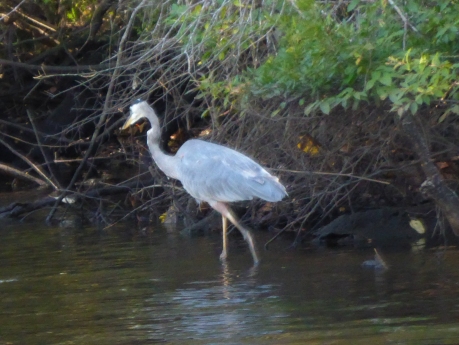
Ardea herodias
Family: Ardeidae
Great blue herons can be seen throughout Tate’s Hell, in the rivers, creeks and ditches along the roads that crisscross the forest. These are large, elegant birds with blue-gray backs, black sides and gray and white striped bellies. The heron’s has a white face, cap and black crest on its head. The juvenile is duller color and without a crest. White and intermediate phases occur in Florida. Great Blues are easily recognized in flight by 6-foot wind span and neck folded into an “S”.
Great blues can be found anywhere in the continental US and southern portions of Canada. Though they are migratory birds, they can be seen in Florida throughout the year. Their preferred habitats include lakes, ponds, rivers and marshes. They lay two to seven pale blue or blue green eggs on a shallow platform of sticks lined with finer material, usually in a tree, but sometimes on the ground or concealed in a reed bed. They often nest in colonies. The eggs incubate from 25 to 30 days and both adults share in the sitting. The average life span is 15 years.
They are carnivorous and eat fish, frogs, salamanders, lizards, snakes, shrimps, crabs, crayfish, dragonflies, grasshoppers and other aquatic insects. They forage while wading, of belly deep, impaling prey with their sharp bills. They are active day and night.
The great blue heron in Womack Creek is particularly skittish and therefore we have not been able to get closer to the bird, unlike other places where it is fairly easy to get close enough to great blues while paddling. All photographs on this blog are all taken on Womack Creek so until we are able to get closer to the bird(s), this photo will have to suffice.
Most of the information is from iBird PRO, a great I-touch application for bird ID.


